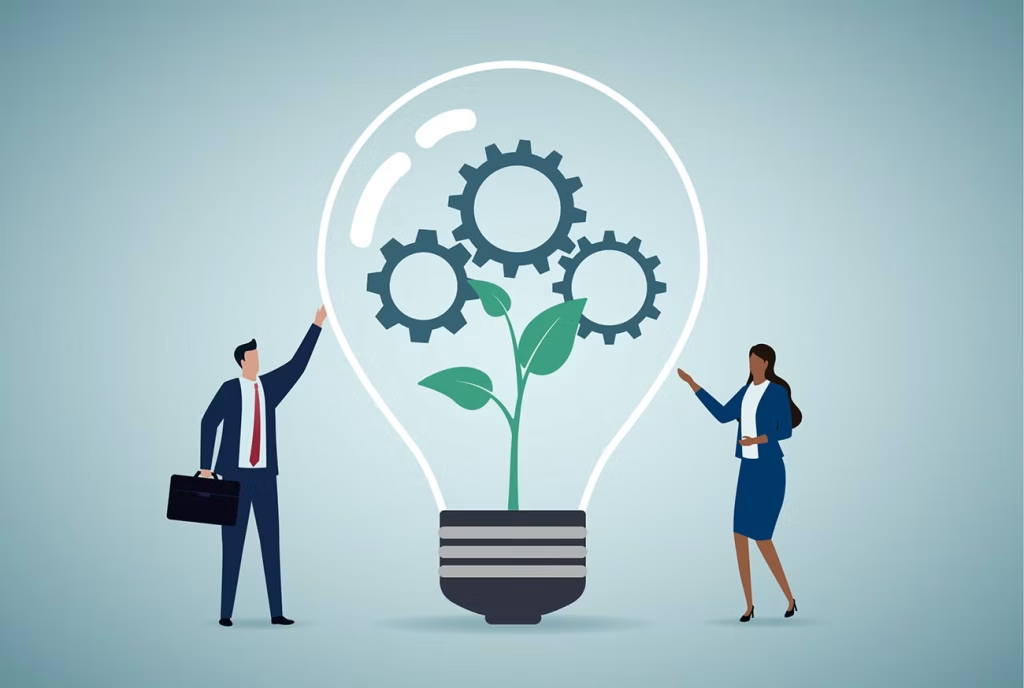In today’s fast-paced, ever-evolving global economy, building a business is no longer just about having a great product or service. The most successful companies are those that can adapt to change, embrace innovation, and build resilience in the face of uncertainty. Whether you’re running a startup, managing a small business, or leading a multinational organization, the key to long-term success lies in your ability to navigate disruption and build systems that support sustainable growth.
From economic turbulence and technological advancements to shifting consumer expectations and global crises, modern businesses must prepare for the unpredictable. This article explores the core principles and strategies that define resilient, future-ready businesses — and how leaders can apply them for lasting impact.
1. Understanding Resilience in Business
Business resilience is the ability of an organization to withstand shocks, adapt to disruptions, and recover quickly from adversity. It goes beyond disaster recovery or risk management — resilience is about creating a business culture and operational model that can pivot and thrive no matter the circumstances.
This includes:
-
Operational agility: The ability to quickly shift strategies or processes.
-
Financial stability: Managing cash flow, cost control, and access to emergency funds.
-
Cultural adaptability: Fostering a workforce that is flexible, innovative, and collaborative.
-
Strategic foresight: Anticipating market changes and preparing accordingly.
Building resilience requires investment, not just in infrastructure or tools, but in people, leadership, and values.
2. Embracing Digital Transformation

Technology continues to reshape how business is done. From cloud-based systems to automation, artificial intelligence, and data analytics, digital transformation is no longer optional — it’s a necessity.
Organizations that embrace digital tools can:
-
Streamline operations
-
Improve customer experience
-
Enhance data-driven decision-making
-
Scale faster with fewer resources
But transformation doesn’t mean replacing people with technology. Instead, it’s about augmenting human capabilities and empowering teams to focus on value-added tasks. For small businesses, even simple upgrades — like using digital invoicing or CRM systems — can drastically improve efficiency.
Leaders must create a digital culture where innovation is encouraged and continuous learning is the norm.
3. Customer-Centric Thinking
Modern customers are more informed, connected, and selective than ever. They expect businesses to be responsive, transparent, and aligned with their values. Companies that prioritize customer-centric strategies build trust, loyalty, and long-term relationships.
Ways to build a customer-first business include:
-
Regularly gathering and acting on feedback
-
Offering personalized experiences
-
Ensuring seamless omnichannel support
-
Delivering consistent value and quality
Moreover, companies must also address the emotional and social needs of customers — not just functional ones. Purpose-driven brands that stand for something greater tend to resonate more deeply and win customer advocacy.
4. Agility in Leadership and Decision-Making
Leadership in a resilient business requires clarity, courage, and adaptability. In an age of rapid change, decision-making must be both fast and informed. That means relying on real-time data, empowering mid-level managers, and fostering a decentralized structure where teams can act independently when needed.
Agile leaders:
-
Communicate transparently during crises
-
Encourage experimentation and learning from failure
-
Embrace change rather than resist it
-
Invest in leadership development at every level
Cultivating this mindset helps organizations remain competitive and innovative, especially in times of disruption.
5. Diversification and Innovation
Putting all your eggs in one basket is a risky move in business. Whether it’s relying on a single product, supplier, or revenue stream, lack of diversification can make companies vulnerable.
Innovative businesses constantly look for new opportunities:
-
Launching new products or services
-
Entering new markets or demographics
-
Creating partnerships or collaborations
-
Exploring digital channels and new monetization models
Innovation doesn’t always mean inventing something new. It can also mean improving existing offerings or finding better ways to deliver them. Encouraging a culture where new ideas are welcomed and tested quickly helps companies stay ahead of the curve.
6. Sustainable and Ethical Practices
Consumers, investors, and employees are increasingly drawn to businesses that operate with integrity and responsibility. Sustainability is no longer just a PR topic — it’s a core business strategy.
This includes:
-
Reducing environmental impact (e.g., carbon footprint, packaging waste)
-
Supporting fair labor practices and local communities
-
Maintaining ethical supply chains
-
Reporting transparently on ESG (Environmental, Social, Governance) metrics
Businesses that build sustainability into their models tend to enjoy stronger brand loyalty, improved regulatory compliance, and long-term profitability.
7. Investing in People and Culture
At the heart of every resilient business is its people. Hiring, retaining, and developing top talent is crucial to long-term success. But it’s not just about skills — it’s about creating a work culture that supports engagement, diversity, and inclusion.
Resilient businesses invest in:
-
Employee training and development
-
Mental health and well-being programs
-
Flexible and remote working options
-
Clear career progression paths
-
Diversity and equity initiatives
When people feel valued and supported, they are more likely to stay, grow, and contribute to the company’s mission — especially during difficult times.
8. Risk Management and Scenario Planning
While resilience is about adaptability, it also involves proactive risk planning. Businesses must identify vulnerabilities and prepare for different outcomes, whether it’s a supply chain disruption, cyberattack, economic downturn, or natural disaster.
Key actions include:
-
Regular risk assessments
-
Business continuity planning
-
Building financial reserves
-
Developing backup suppliers and partners
-
Cybersecurity training and protocols
Scenario planning — imagining various future events and planning responses — enables businesses to respond more quickly and confidently under pressure.9. Leveraging Data and Insights
In today’s digital economy, data is one of the most valuable assets a business can have. From customer behavior and sales trends to employee performance and supply chain logistics, data offers deep insights that guide better decisions.
Successful companies:
-
Use real-time analytics to monitor performance
-
Forecast demand and market shifts
-
Identify inefficiencies and opportunities for improvement
-
Personalize offerings for different customer segments
However, with great data comes great responsibility. Ensuring data privacy and compliance with regulations (like GDPR) is essential to maintaining customer trust.
10. Future-Proofing Through Continuous Learning
Finally, a resilient business is one that never stops learning. The market will continue to change. Technologies will evolve. Customer preferences will shift. The businesses that succeed will be those that stay curious, adaptable, and committed to continuous improvement.

This involves:
-
Ongoing training and upskilling
-
Attending industry events and staying updated
-
Learning from competitors and other industries
-
Encouraging experimentation and feedback loops
In other words, resilience is not a destination — it’s a mindset.
Conclusion: Resilience Is the New Competitive Advantage
As the business environment becomes more volatile, the companies that thrive will be those that adapt with intention, innovate with purpose, and lead with integrity. Resilience is not just about surviving hard times — it’s about building a foundation for sustained growth, empowered teams, and long-term value.
By focusing on agility, people, technology, and sustainable practices, today’s businesses can not only weather disruption but emerge stronger, smarter, and more impactful.
Whether you’re just starting out or looking to future-proof an established brand, the time to invest in resilience is now.



